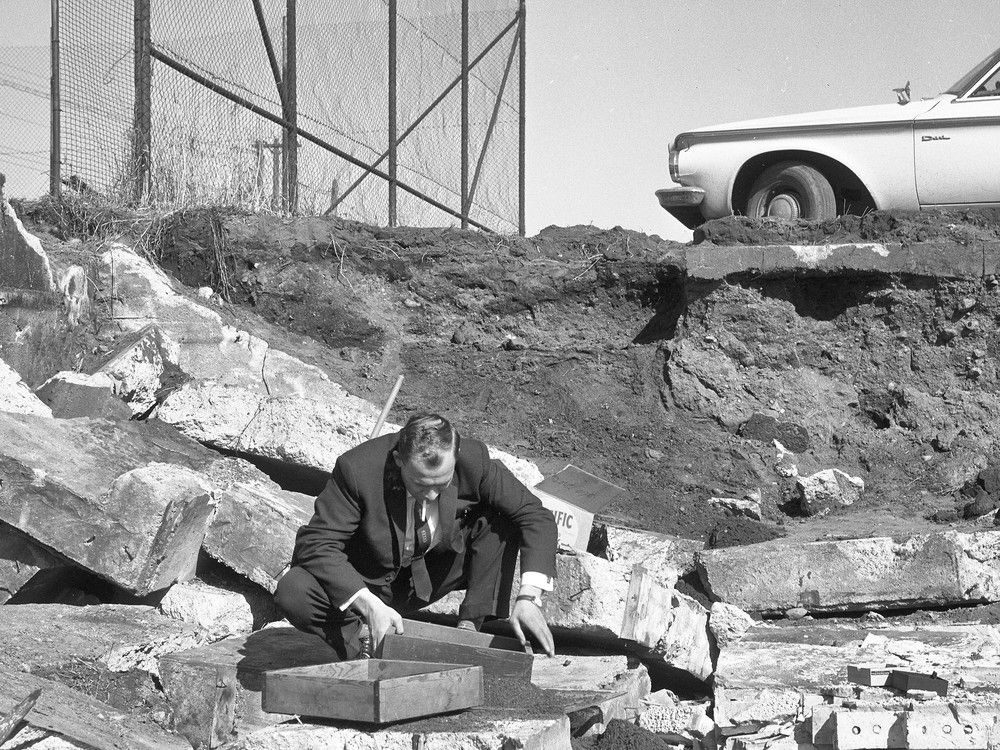
With our central bank governor urging UK officials to help freeze large assets held there by erstwhile Bangladeshi political leaders, development partners agreeing to assist Bangladesh in building capacity to trace and recover siphoned or stolen assets, and global litigation funders trying to figure out what's going on in Bangladesh, one could easily conclude that Bangladesh is quite serious about reclaiming its illegally transferred assets. The global movement of stolen public funds is not merely a financial issue. It is a legal battlefield involving jurisdictional complexities, procedural innovation, and an evolving interpretation of state responsibility.
For Bangladesh, where estimates of laundered assets run into the billions, the need to go beyond surface-level investigations and into a rigorous legal strategy has never been more pressing. Asset recovery begins not with courtroom drama but with detection. Stolen asset detection is not simply about spotting suspicious bank transactions.

Rather, it requires building a credible, legally admissible chain of evidence that links illicit funds to a predicate offense such as fraud, embezzlement, or corruption. At this stage, states often rely on Suspicious Transaction Reports (STRs) flagged by financial institutions, along with cooperation from foreign jurisdictions under instruments like the Common Reporting Standard (CRS). However, Bangladesh must go further.
The introduction of a robust Unexplained Wealth Order (UWO) framework, as seen in the UK under the Criminal Finances Act 2017, would allow courts to compel individuals to justify assets inconsistent with their known income. This reverses the evidentiary burden—a powerful tool when dealing with politically exposed persons who often hide behind opaque corporate structures. Once assets are located, a state must determine whether to pursue a criminal suit, a civil suit, or both.
In many jurisdictions, including Bangladesh, criminal prosecution is the default route. But this strategy is slow and often ineffective when the accused resides abroad or when dual criminality is a challenge—where the foreign state does not recognise the offense as a crime under its own laws or when the money is easily embedded into the banking system. In such scenarios, civil recovery or non-conviction-based forfeiture may offer more flexibility.
These legal processes do not require a criminal conviction and are based on the "balance of probabilities" standard rather than "beyond a reasonable doubt." Several countries, including Kenya and Colombia, have successfully used civil recovery to reclaim funds without waiting for lengthy criminal trials. When litigation begins, freezing the asset becomes the most urgent priority.
Without it, the stolen funds may shift again, disappearing behind new layers of legal cover-up. Asset freezing typically occurs through mutual legal assistance (MLA) requests, which are formal legal petitions submitted from one country to another. However, MLA frameworks are only as good as the treaties supporting them.
Bangladesh, despite signing the UN Convention Against Corruption (UNCAC), has yet to establish bilateral Mutual Legal Assistance Treaties (MLATs) with many key destination countries, including Switzerland, Australia, and Canada. This procedural gap severely limits its ability to act quickly. Beyond MLATs, Bangladesh should consider model provisions from the OECD's Convention on Mutual Administrative Assistance in Tax Matters, which facilitate real-time data sharing and can trigger provisional measures such as injunctions and restraining orders.
Legal theory alone is not enough. The recovery process is political. If the requesting state does not show political will—demonstrated by consistent court action, ministerial coordination, and diplomatic engagement—destination states are unlikely to cooperate.
Even worse, inconsistent messaging at home undermines the credibility of recovery efforts abroad. Bangladesh must therefore institutionalise asset recovery as a long-term policy objective rather than an episodic political reaction. The creation of an independent Asset Recovery Authority with legal autonomy and transnational reach would serve this purpose.
International cooperation remains a double-edged sword. While organisations like the World Bank's Stolen Asset Recovery Initiative (StAR) and Interpol's Anti-Corruption Coordination Centre offer technical support, actual enforcement depends on domestic capacity. Take, for example, the concept of Deferred Prosecution Agreements (DPAs), which are legally binding settlements where a company admits wrongdoing, pays restitution, and avoids conviction.
Countries like the US and France have used DPAs to recover billions in corruption-related penalties, much of which can be repatriated to the affected country. Bangladesh has yet to explore this instrument in serious negotiations with foreign enforcement bodies. Sanctions are often misunderstood as foreign policy tools, but in asset recovery, they can play a preventative role.
Targeted sanctions, when imposed on individuals or enablers such as lawyers, bankers, and company formation agents, disrupt the infrastructure that supports laundering. The European Union's Global Human Rights Sanctions Regime and the US Magnitsky Act both offer pathways to impose such measures, but they require credible dossiers and sustained lobbying. If Bangladesh seeks this route, it must be prepared to present strong prima facie evidence to foreign regulators and build partnerships with civil society watchdogs abroad.
Critically, the source of the laundered funds should inform recovery tactics. Funds embezzled from bank loans often leave a paper trail through domestic institutions and may be easier to pursue via banking regulators or bankruptcy courts. In contrast, funds skimmed from infrastructure project payouts—especially via inflated contracts, offshore intermediaries, or mispriced goods—require forensic contract audits and international procurement expertise.
Each source demands a tailored legal approach. A one-size-fits-all model will not work. Finally, asset recovery does not end with repatriation.
Misuse of recovered funds remains a major problem worldwide. In response, international best practices now demand post-recovery transparency frameworks. Nigeria's agreement with the World Bank to monitor repatriated Abacha funds is one such model.
Bangladesh would do well to adopt similar commitments, not only to ensure proper utilisation but also to build public confidence in the legal process. While the articles circulating in the national press have done well to raise public awareness, the legal architecture behind asset recovery demands far deeper engagement. Bangladesh now stands at a crossroads.
If it is to recover what was stolen and prevent future loss, it must elevate asset recovery from political rhetoric to institutional strategy—supported by law, driven by evidence, and protected by international collaboration. The legal tools exist. The question is whether the state is ready to use them.
Mamun Rashid is an economic analyst and chairman at Financial Excellence Ltd. Views expressed in this article are the author's own. Follow The Daily Star Opinion on Facebook for the latest opinions, commentaries and analyses by experts and professionals.
To contribute your article or letter to The Daily Star Opinion, see our guidelines for submission . With our central bank governor urging UK officials to help freeze large assets held there by erstwhile Bangladeshi political leaders, development partners agreeing to assist Bangladesh in building capacity to trace and recover siphoned or stolen assets, and global litigation funders trying to figure out what's going on in Bangladesh, one could easily conclude that Bangladesh is quite serious about reclaiming its illegally transferred assets. The global movement of stolen public funds is not merely a financial issue.
It is a legal battlefield involving jurisdictional complexities, procedural innovation, and an evolving interpretation of state responsibility. For Bangladesh, where estimates of laundered assets run into the billions, the need to go beyond surface-level investigations and into a rigorous legal strategy has never been more pressing. Asset recovery begins not with courtroom drama but with detection.
Stolen asset detection is not simply about spotting suspicious bank transactions. Rather, it requires building a credible, legally admissible chain of evidence that links illicit funds to a predicate offense such as fraud, embezzlement, or corruption. At this stage, states often rely on Suspicious Transaction Reports (STRs) flagged by financial institutions, along with cooperation from foreign jurisdictions under instruments like the Common Reporting Standard (CRS).
However, Bangladesh must go further. The introduction of a robust Unexplained Wealth Order (UWO) framework, as seen in the UK under the Criminal Finances Act 2017, would allow courts to compel individuals to justify assets inconsistent with their known income. This reverses the evidentiary burden—a powerful tool when dealing with politically exposed persons who often hide behind opaque corporate structures.
Once assets are located, a state must determine whether to pursue a criminal suit, a civil suit, or both. In many jurisdictions, including Bangladesh, criminal prosecution is the default route. But this strategy is slow and often ineffective when the accused resides abroad or when dual criminality is a challenge—where the foreign state does not recognise the offense as a crime under its own laws or when the money is easily embedded into the banking system.
In such scenarios, civil recovery or non-conviction-based forfeiture may offer more flexibility. These legal processes do not require a criminal conviction and are based on the "balance of probabilities" standard rather than "beyond a reasonable doubt." Several countries, including Kenya and Colombia, have successfully used civil recovery to reclaim funds without waiting for lengthy criminal trials.
When litigation begins, freezing the asset becomes the most urgent priority. Without it, the stolen funds may shift again, disappearing behind new layers of legal cover-up. Asset freezing typically occurs through mutual legal assistance (MLA) requests, which are formal legal petitions submitted from one country to another.
However, MLA frameworks are only as good as the treaties supporting them. Bangladesh, despite signing the UN Convention Against Corruption (UNCAC), has yet to establish bilateral Mutual Legal Assistance Treaties (MLATs) with many key destination countries, including Switzerland, Australia, and Canada. This procedural gap severely limits its ability to act quickly.
Beyond MLATs, Bangladesh should consider model provisions from the OECD's Convention on Mutual Administrative Assistance in Tax Matters, which facilitate real-time data sharing and can trigger provisional measures such as injunctions and restraining orders. Legal theory alone is not enough. The recovery process is political.
If the requesting state does not show political will—demonstrated by consistent court action, ministerial coordination, and diplomatic engagement—destination states are unlikely to cooperate. Even worse, inconsistent messaging at home undermines the credibility of recovery efforts abroad. Bangladesh must therefore institutionalise asset recovery as a long-term policy objective rather than an episodic political reaction.
The creation of an independent Asset Recovery Authority with legal autonomy and transnational reach would serve this purpose. International cooperation remains a double-edged sword. While organisations like the World Bank's Stolen Asset Recovery Initiative (StAR) and Interpol's Anti-Corruption Coordination Centre offer technical support, actual enforcement depends on domestic capacity.
Take, for example, the concept of Deferred Prosecution Agreements (DPAs), which are legally binding settlements where a company admits wrongdoing, pays restitution, and avoids conviction. Countries like the US and France have used DPAs to recover billions in corruption-related penalties, much of which can be repatriated to the affected country. Bangladesh has yet to explore this instrument in serious negotiations with foreign enforcement bodies.
Sanctions are often misunderstood as foreign policy tools, but in asset recovery, they can play a preventative role. Targeted sanctions, when imposed on individuals or enablers such as lawyers, bankers, and company formation agents, disrupt the infrastructure that supports laundering. The European Union's Global Human Rights Sanctions Regime and the US Magnitsky Act both offer pathways to impose such measures, but they require credible dossiers and sustained lobbying.
If Bangladesh seeks this route, it must be prepared to present strong prima facie evidence to foreign regulators and build partnerships with civil society watchdogs abroad. Critically, the source of the laundered funds should inform recovery tactics. Funds embezzled from bank loans often leave a paper trail through domestic institutions and may be easier to pursue via banking regulators or bankruptcy courts.
In contrast, funds skimmed from infrastructure project payouts—especially via inflated contracts, offshore intermediaries, or mispriced goods—require forensic contract audits and international procurement expertise. Each source demands a tailored legal approach. A one-size-fits-all model will not work.
Finally, asset recovery does not end with repatriation. Misuse of recovered funds remains a major problem worldwide. In response, international best practices now demand post-recovery transparency frameworks.
Nigeria's agreement with the World Bank to monitor repatriated Abacha funds is one such model. Bangladesh would do well to adopt similar commitments, not only to ensure proper utilisation but also to build public confidence in the legal process. While the articles circulating in the national press have done well to raise public awareness, the legal architecture behind asset recovery demands far deeper engagement.
Bangladesh now stands at a crossroads. If it is to recover what was stolen and prevent future loss, it must elevate asset recovery from political rhetoric to institutional strategy—supported by law, driven by evidence, and protected by international collaboration. The legal tools exist.
The question is whether the state is ready to use them. Mamun Rashid is an economic analyst and chairman at Financial Excellence Ltd. Views expressed in this article are the author's own.
Follow The Daily Star Opinion on Facebook for the latest opinions, commentaries and analyses by experts and professionals. To contribute your article or letter to The Daily Star Opinion, see our guidelines for submission ..















